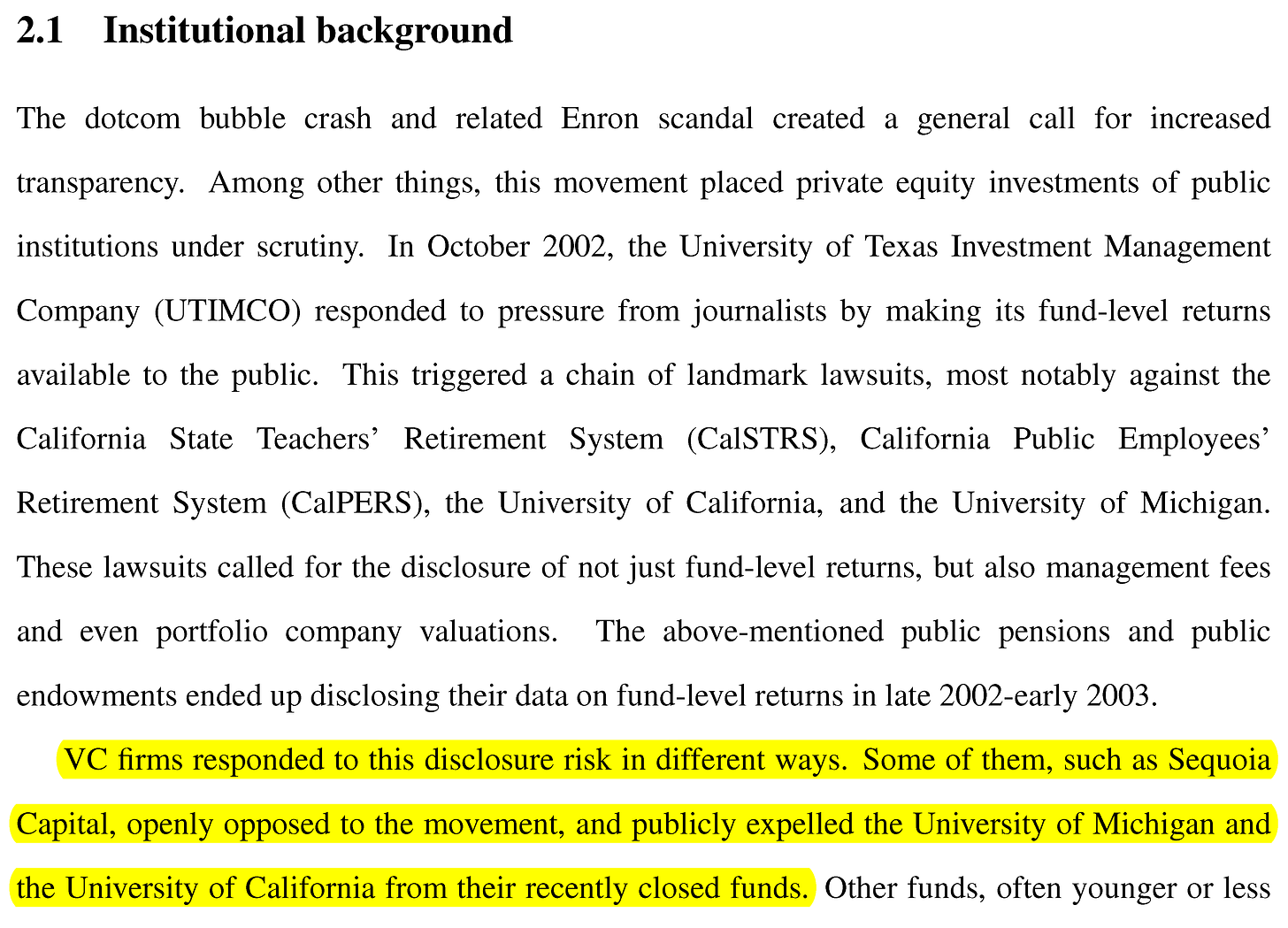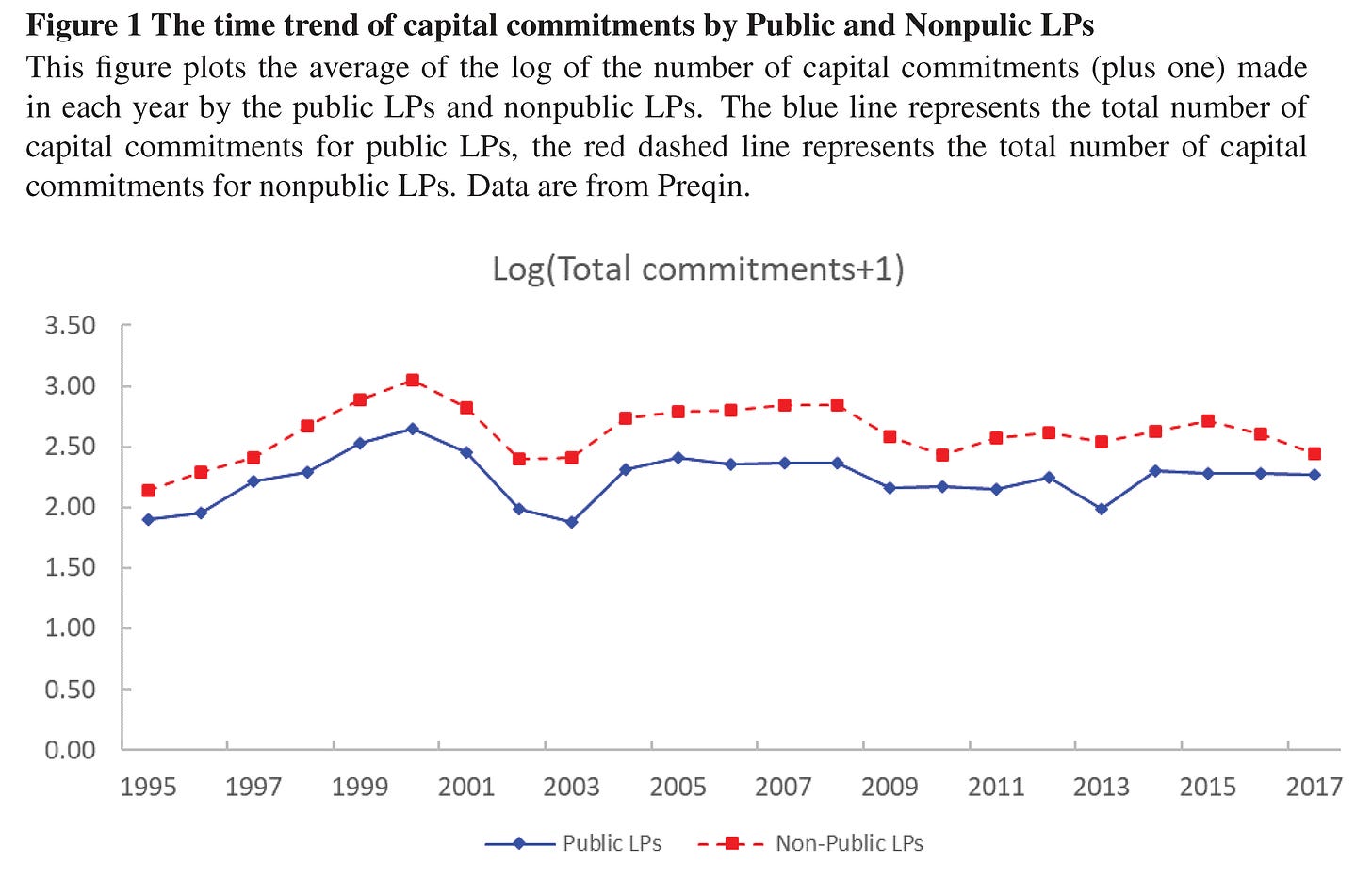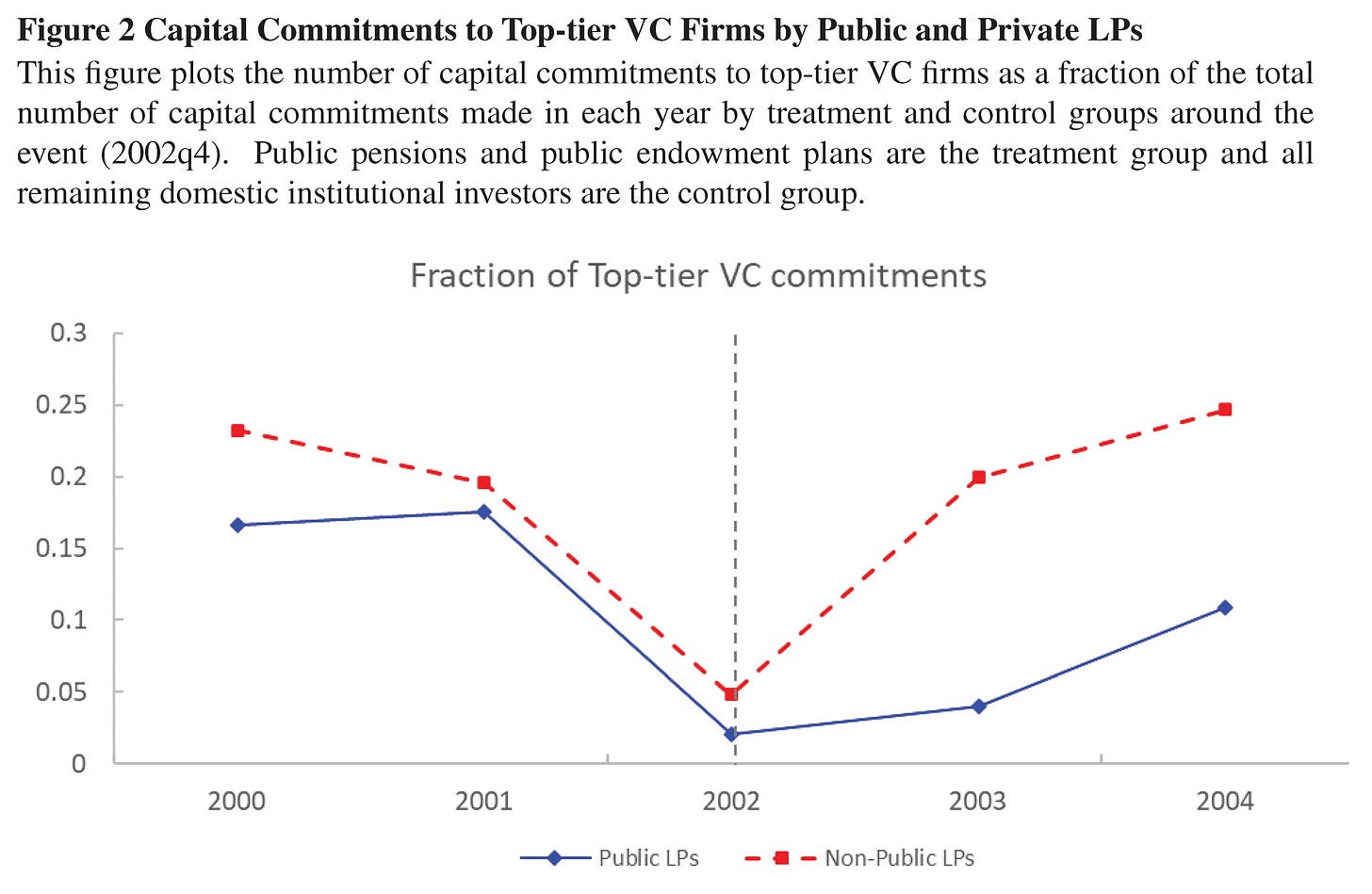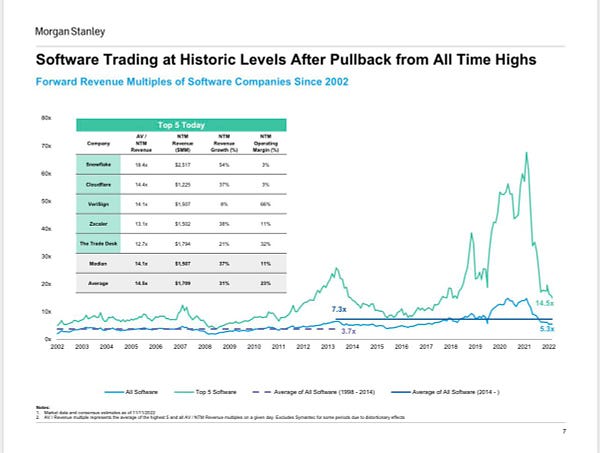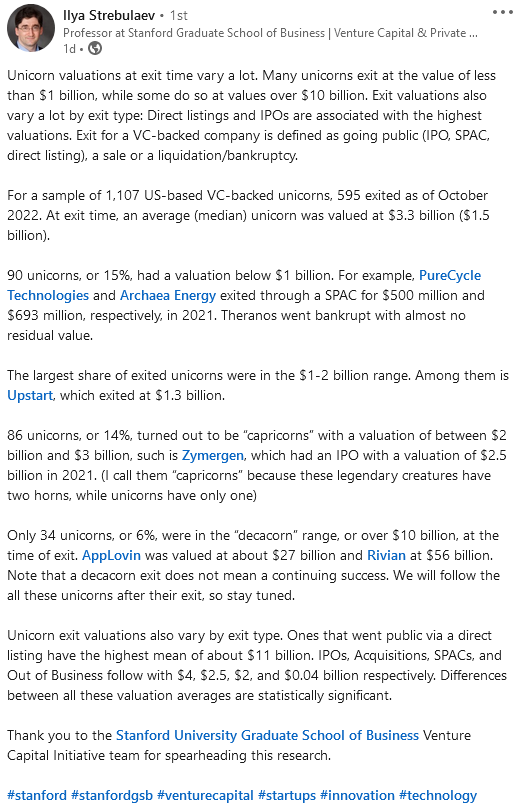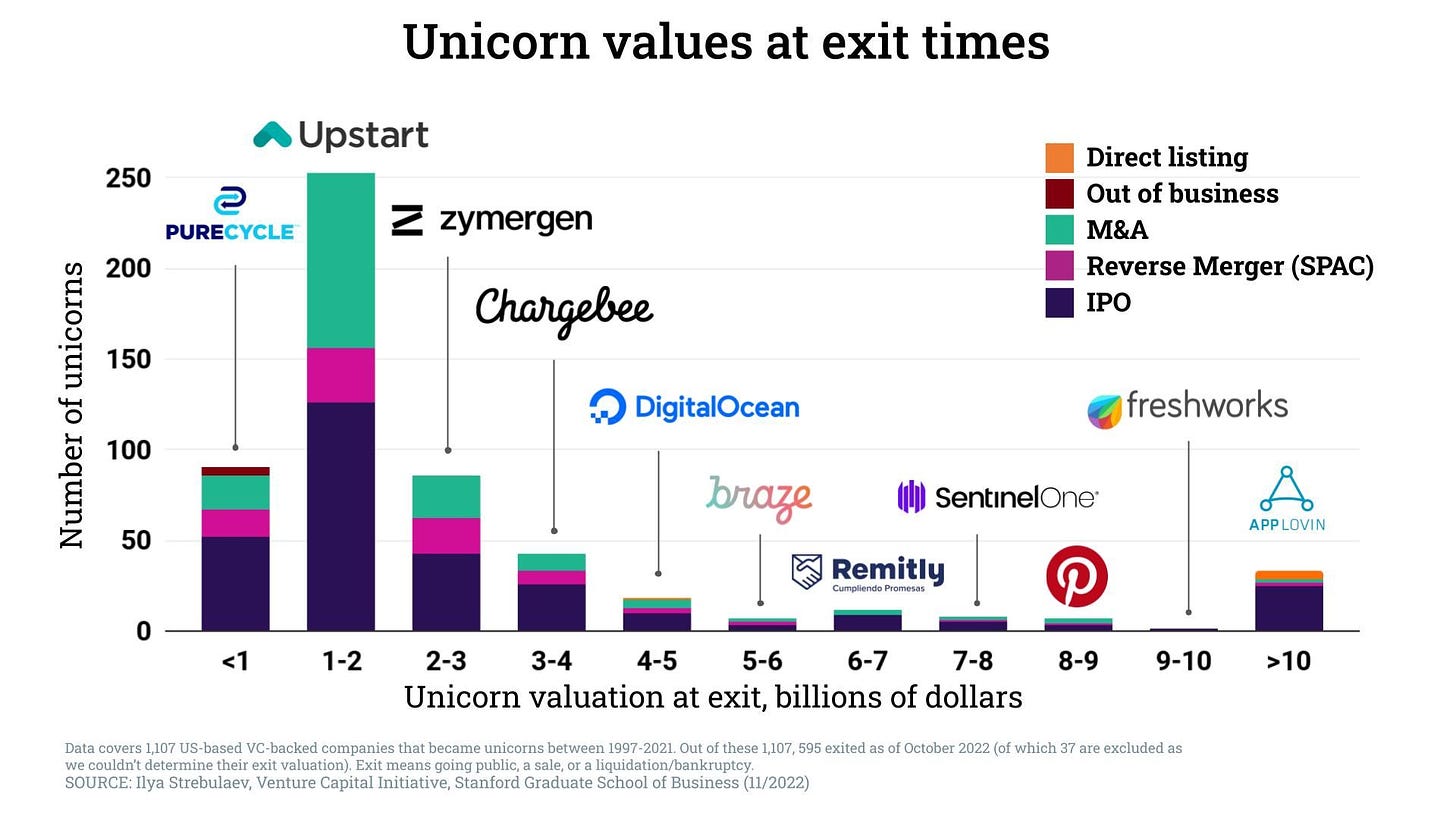Qubit: Research on Public LPs in VC
After the dotcom bust twenty years ago, the top VC firms were expelling public LPs from their funds to avoid disclosing portfolio company details.
Now some of those firms are becoming RIAs, growing their AUM, and publishing details on their portfolio companies alongside with glowing profiles of their founders.
"The dotcom bubble crash and related Enron scandal created a general call for increased transparency. Among other things, this movement placed private equity investments of public institutions under scrutiny. In October 2002, the University of Texas Investment Management Company (UTIMCO) responded to pressure from journalists by making its fund-level returns available to the public. This triggered a chain of landmark lawsuits, most notably against the California State Teachers’ Retirement System (CalSTRS), California Public Employees’ Retirement System (CalPERS), the University of California, and the University of Michigan. These lawsuits called for the disclosure of not just fund-level returns, but also management fees and even portfolio company valuations. The above-mentioned public pensions and public endowments ended up disclosing their data on fund-level returns in late 2002-early 2003.
VC firms responded to this disclosure risk in different ways. Some of them, such as Sequoia Capital, openly opposed to the movement, and publicly expelled the University of Michigan and the University of California from their recently closed funds."
Source:
The Value of Privacy and the Choice of Limited Partners by Venture Capitalists
Tweets and Posts:

Qubits are insights that we find and share with you.




